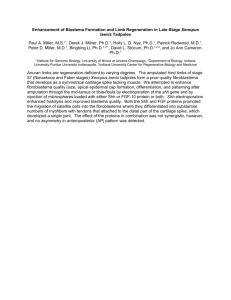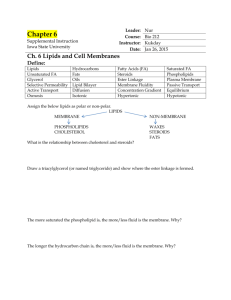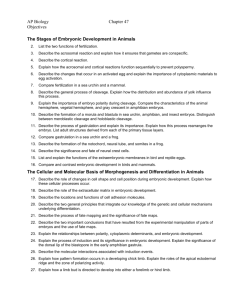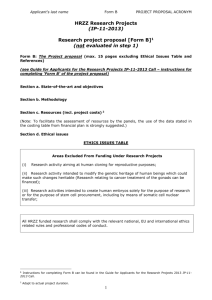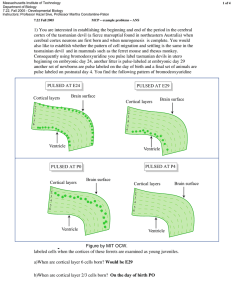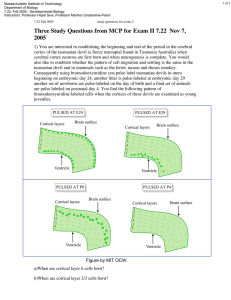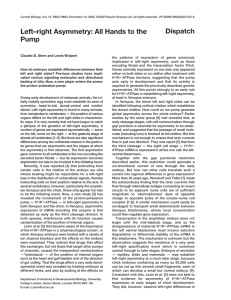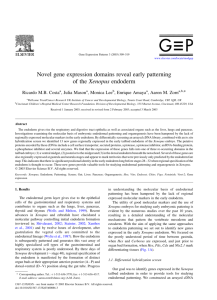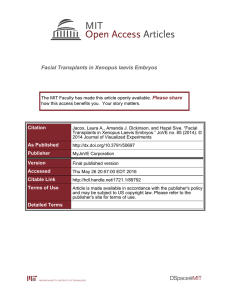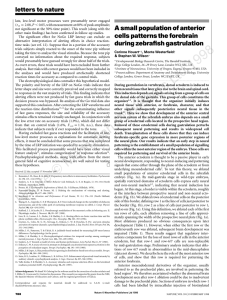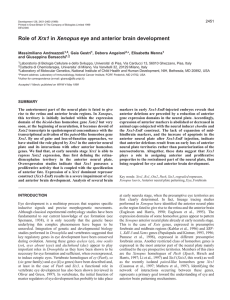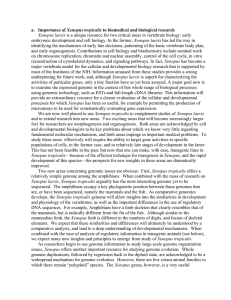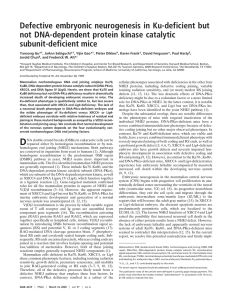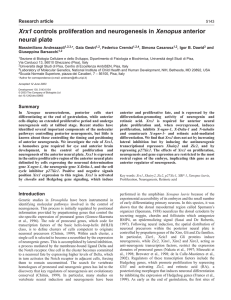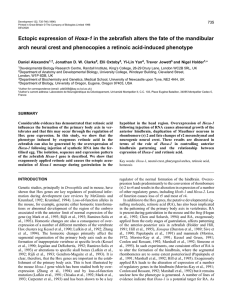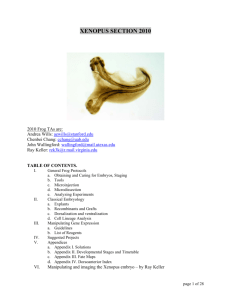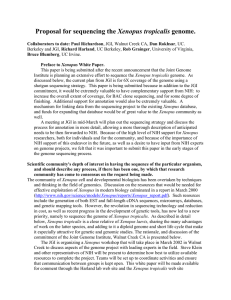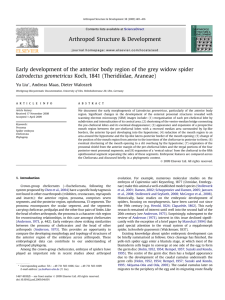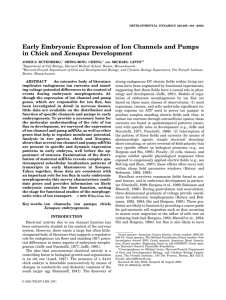Emerging roles form cholesterol-rich membrane microdomains
advertisement
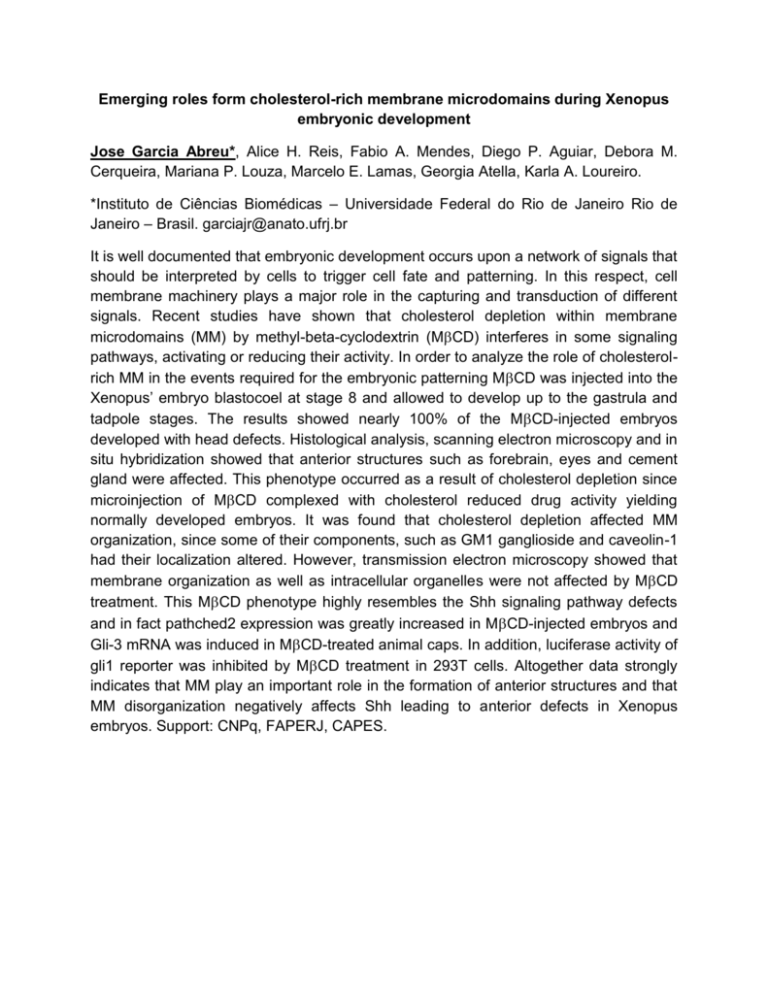
Emerging roles form cholesterol-rich membrane microdomains during Xenopus embryonic development Jose Garcia Abreu*, Alice H. Reis, Fabio A. Mendes, Diego P. Aguiar, Debora M. Cerqueira, Mariana P. Louza, Marcelo E. Lamas, Georgia Atella, Karla A. Loureiro. *Instituto de Ciências Biomédicas – Universidade Federal do Rio de Janeiro Rio de Janeiro – Brasil. garciajr@anato.ufrj.br It is well documented that embryonic development occurs upon a network of signals that should be interpreted by cells to trigger cell fate and patterning. In this respect, cell membrane machinery plays a major role in the capturing and transduction of different signals. Recent studies have shown that cholesterol depletion within membrane microdomains (MM) by methyl-beta-cyclodextrin (MCD) interferes in some signaling pathways, activating or reducing their activity. In order to analyze the role of cholesterolrich MM in the events required for the embryonic patterning MCD was injected into the Xenopus’ embryo blastocoel at stage 8 and allowed to develop up to the gastrula and tadpole stages. The results showed nearly 100% of the MCD-injected embryos developed with head defects. Histological analysis, scanning electron microscopy and in situ hybridization showed that anterior structures such as forebrain, eyes and cement gland were affected. This phenotype occurred as a result of cholesterol depletion since microinjection of MCD complexed with cholesterol reduced drug activity yielding normally developed embryos. It was found that cholesterol depletion affected MM organization, since some of their components, such as GM1 ganglioside and caveolin-1 had their localization altered. However, transmission electron microscopy showed that membrane organization as well as intracellular organelles were not affected by MCD treatment. This MCD phenotype highly resembles the Shh signaling pathway defects and in fact pathched2 expression was greatly increased in MCD-injected embryos and Gli-3 mRNA was induced in MCD-treated animal caps. In addition, luciferase activity of gli1 reporter was inhibited by MCD treatment in 293T cells. Altogether data strongly indicates that MM play an important role in the formation of anterior structures and that MM disorganization negatively affects Shh leading to anterior defects in Xenopus embryos. Support: CNPq, FAPERJ, CAPES.
